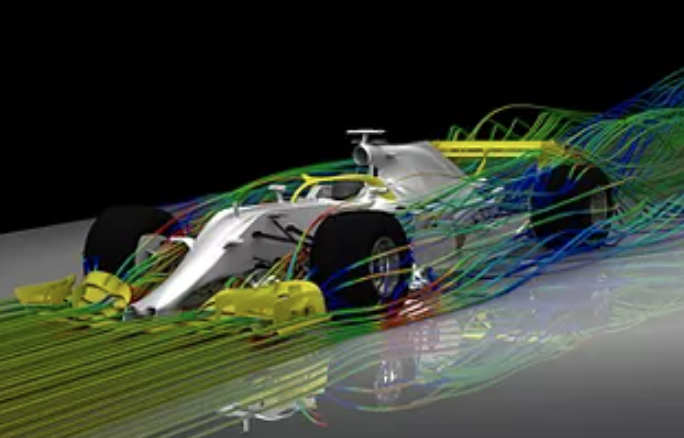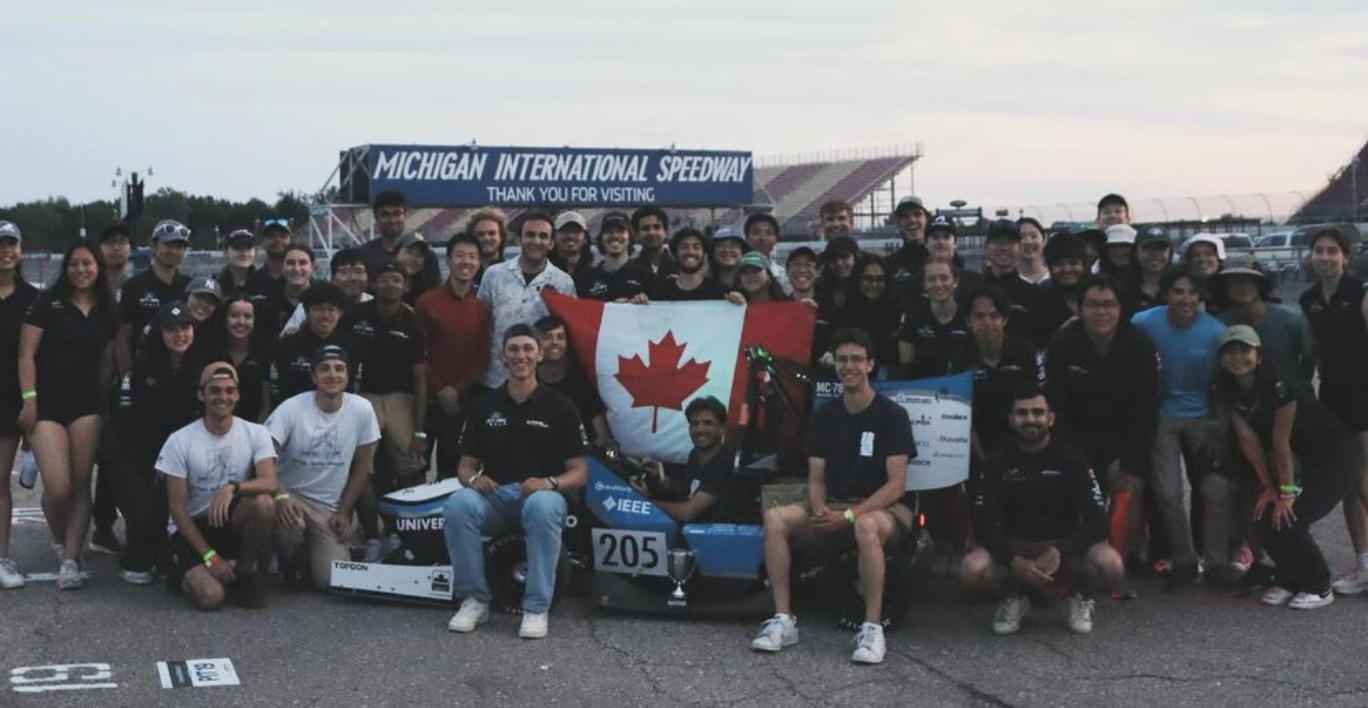Jasmine Wu
- From: Calgary, Alberta
- Major: Aerospace Engineering
- Summer Plans: Vehicle Aerodynamicist Intern at Rivian, before heading to the United Kingdom for PEY at Airbus as an Aerodynamicist
- Hobbies: “Yapping”
- Fun Fact: Jasmine is the Aerodynamics lead for University of Toronto Formula Racing (UTFR)!

From where did your interest in aerodynamics originate?

Coming into EngSci, I didn’t really know what aerospace was; I didn’t know about propulsion, aerodynamics, nor structures. I joined the University of Toronto Aerospace Team (UTAT) and specialized in aerodynamics since it was the first term alphabetically and the word “aero” was in both “aerodynamics” and “aerospace.” Eventually, following what I was interested in, I did research in Computational Fluid Dynamics (CFD) at the University of Toronto Institute for Aerospace Studies (UTIAS), moved on to aerodynamics at UTFR, and the roads converged from there.
Since there aren’t any aero courses in first year, because the curriculum is supposed to be foundational, it was my own passion that drove me. Therefore, I presented myself to my future supervisor at UTIAS stating: “I feel like I’m not getting the enrichment in the Aerospace major yet because I’m still in the foundation years, so I was wondering if I could join your lab and do research to explore this area and explore my passion.” There was an aero course in second year, and I find the Aerospace major very interesting; all of the courses I took in third year are exactly the kind of courses that I want to take, but it took some time to get there.
Discuss your progression from UTAT, to UTIAS, to UTFR, and now Rivian. How did your technical knowledge and leadership capabilities evolve from each of these experiences?
For UTFR, it was just walking into the environment at the right time. There wasn’t anyone to take over the Aerodynamics section and there was a lack of knowledge transfer at the time; UTFR at the time was just a lot of Mechanical Engineering students, and they don’t get a course about fluids or CFD until third year. Therefore, walking in with some knowledge of aerodynamics and especially CFD, I was able to present my skills and explain what I wanted to do with the Aerodynamics section, and where I could help out. From there, I was luckily given the position of Aerodynamics lead, and I worked very hard to build up the section. I went back to research again the next summer.
“By then, I had all this experience with UTFR, which was very practical hands-on work; it was the actual process of going through engineering design that companies like to see. Backing it up with my knowledge and research, I think that’s what I was able to use to sell myself to these companies that were looking to hire people.”
The one downside about aerodynamics is that it’s a very complicated field and oftentimes employers, even for interns, will want master’s or PhD students, just because they have more knowledge in the field and don’t have to be taught as much. For a lot of companies, I felt like I was fighting to prove that I could do the same work as a master’s student, which was not always the case at the time.
Do you have any more advice for students wanting to secure internships at such tech companies?
Just play to your strengths. Everyone has something on their resume that people will find interesting.
“I feel like EngScis are just so talented, smart, and interesting, too, that companies will want to hire them. It’s all about highlighting the areas you think that companies should see, as opposed to thinking that you’re unqualified for the job because you don’t have a certain experience.”
Also, you need to remember that your GPA really isn’t everything. My GPA is definitely on the lower end of the spectrum for EngSci Aerospace Engineering majors. I have many friends that have amazing GPAs, but I feel like it’s my practical experiences outside of the classroom that positively pushed me over the edge for these companies. Frankly, I’ve interviewed for some top companies who have not asked for my GPA.
How did you find that balance between your courseload, extracurriculars, and also applying to jobs and research positions?
I’ve always loved doing extracurriculars. In high school, I loaded up my schedule, but in university, I got the amazing advice to start out by joining just one design team and one club, and seeing where that takes me. I recommend students to join extracurriculars and find what they’re passionate about in their first and second years, so you can also determine what you want to do in your third and fourth years.
I think joining a design team is absolutely critical for EngScis, because it allows you to get a lot of practical experience and hands-on work. Design teams push you through the design cycle, including the building, testing, and competing, just like the engineering design process you will learn in Praxis. As I stated earlier, companies love to see that we’re balancing all of that.
I’m probably not the best person to ask about that, because for me my design team takes over my life – but I enjoy it that way! I know it’s hard to let go of grades, so I always tell people to almost, like, introduce your design team into your life little by little, and then you see how much more you can handle. You’re not immediately diving right into the deep end. Instead, you’re just trying to find where your balance point is. For a lot of people, including myself, it’s easy to get sucked into design teams and the hustle culture of it all. There does need to be some balance, and I’ve had to dial it back sometimes.
What sort of opportunities exist on design teams? How do you make the most out of your team at design team competitions and networking events?
Learn how competitions work, and how teams operate. If you stick with a design team, you’ll be going back the next year in a higher position, as someone more responsible for different aspects of the vehicle and moving the team through competition. Also, use design teams and competitions as networking events. You might get money for your team or even a job for yourself; I got my summer internship through networking with a design judge at competition. Even if there aren’t many sponsors, go to talk with other teams about things like your subdivision and interests, When I went to my first competition, I went around and talked with people from other universities about aerodynamics. Competitions are such a unique experience that you only get from being on and committing to a design team. Bond with your team, get your name known, and make contacts with them. At the end of the day, don’t stress about those aspects – just enjoy the overall experience itself. I encourage every single one of my recruits to go to competition and experience it all.

